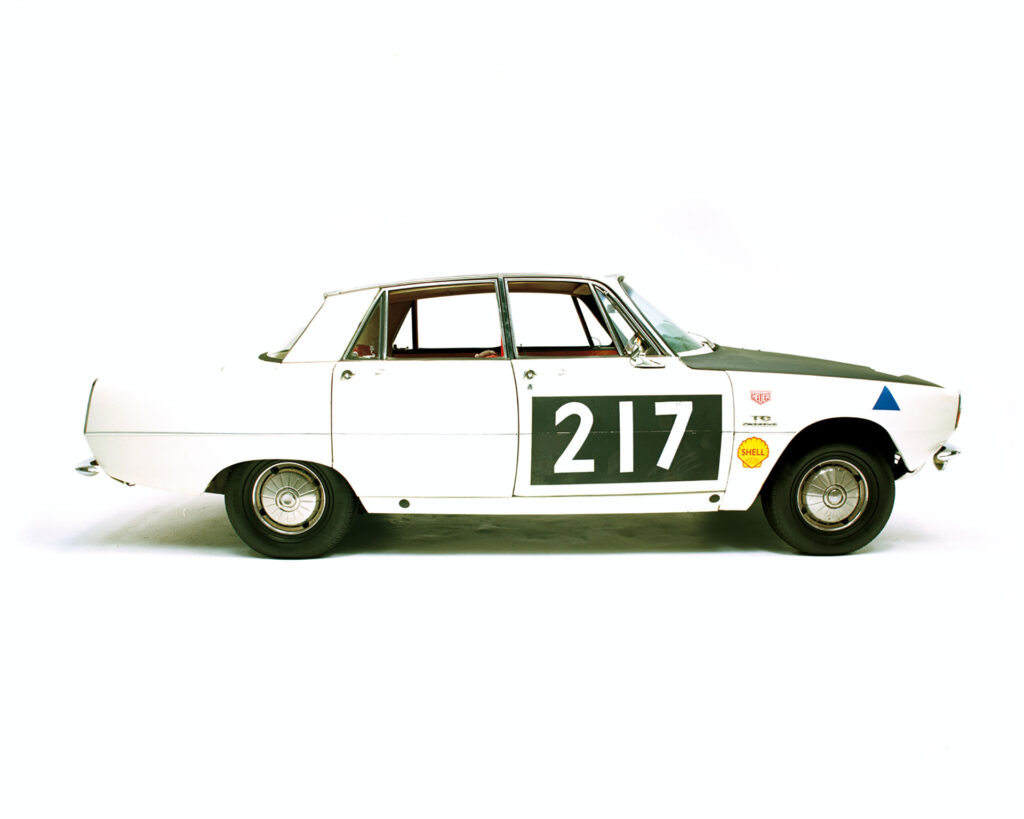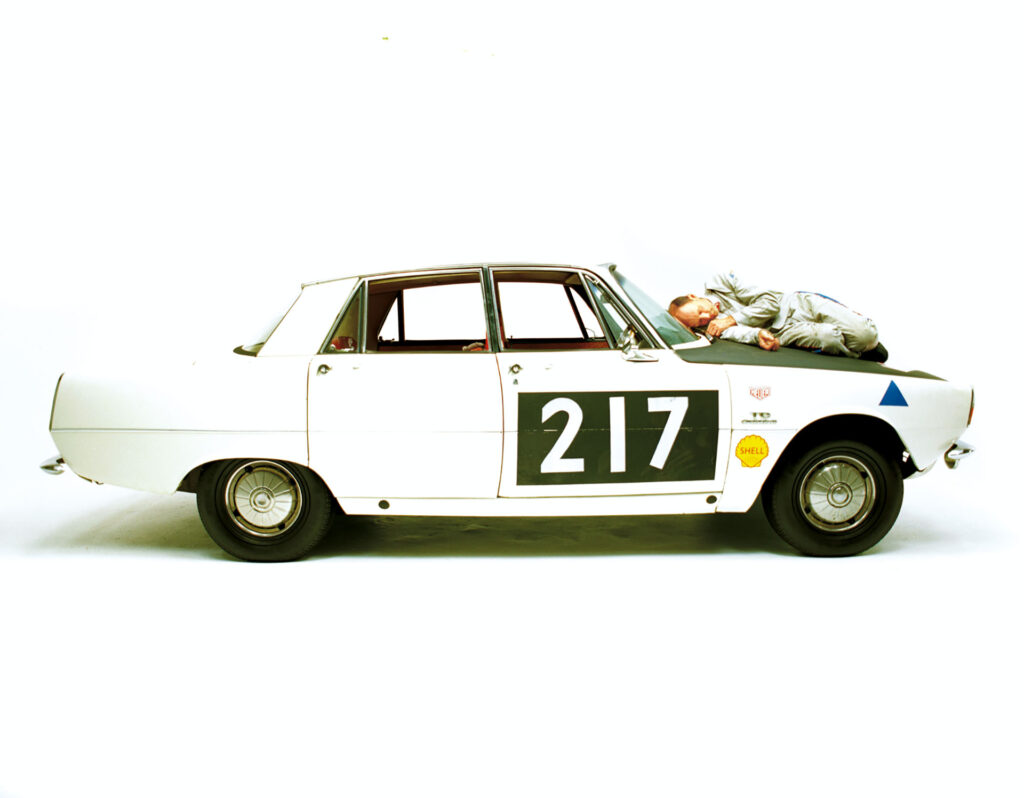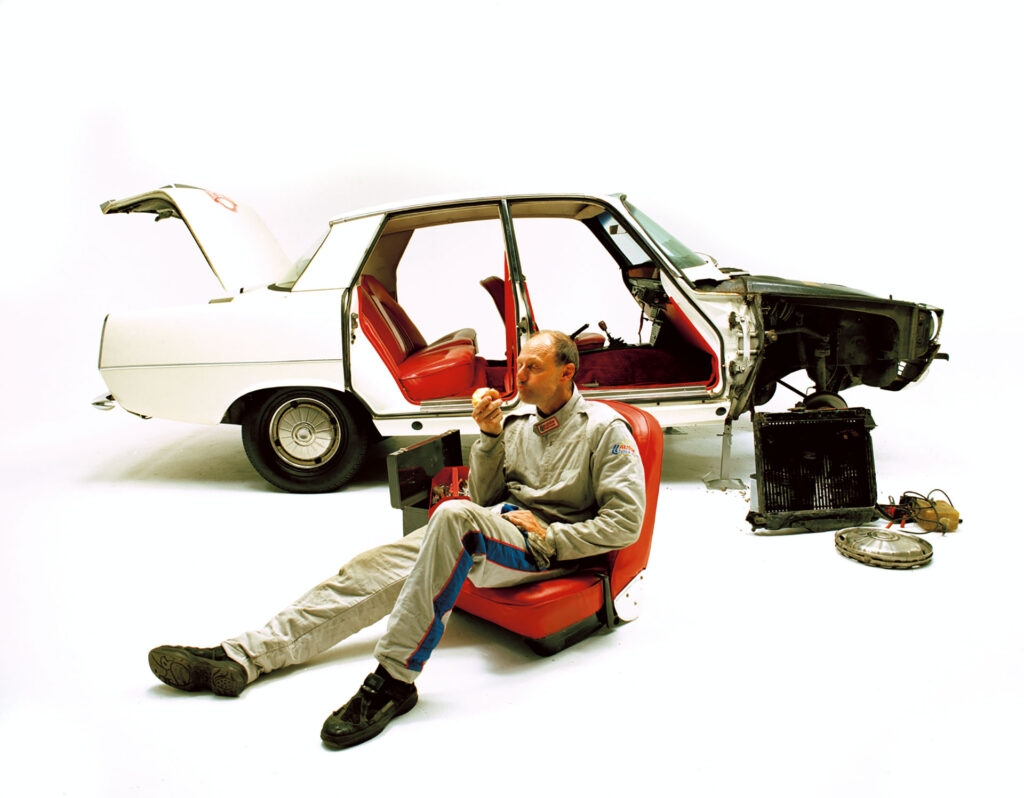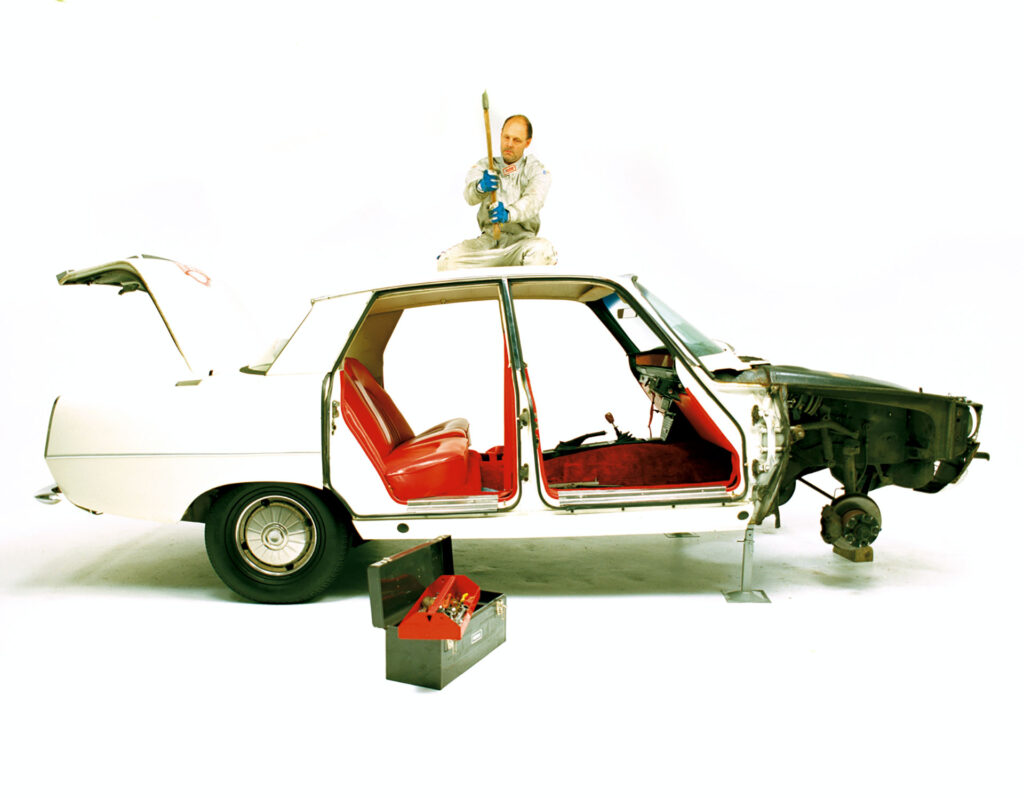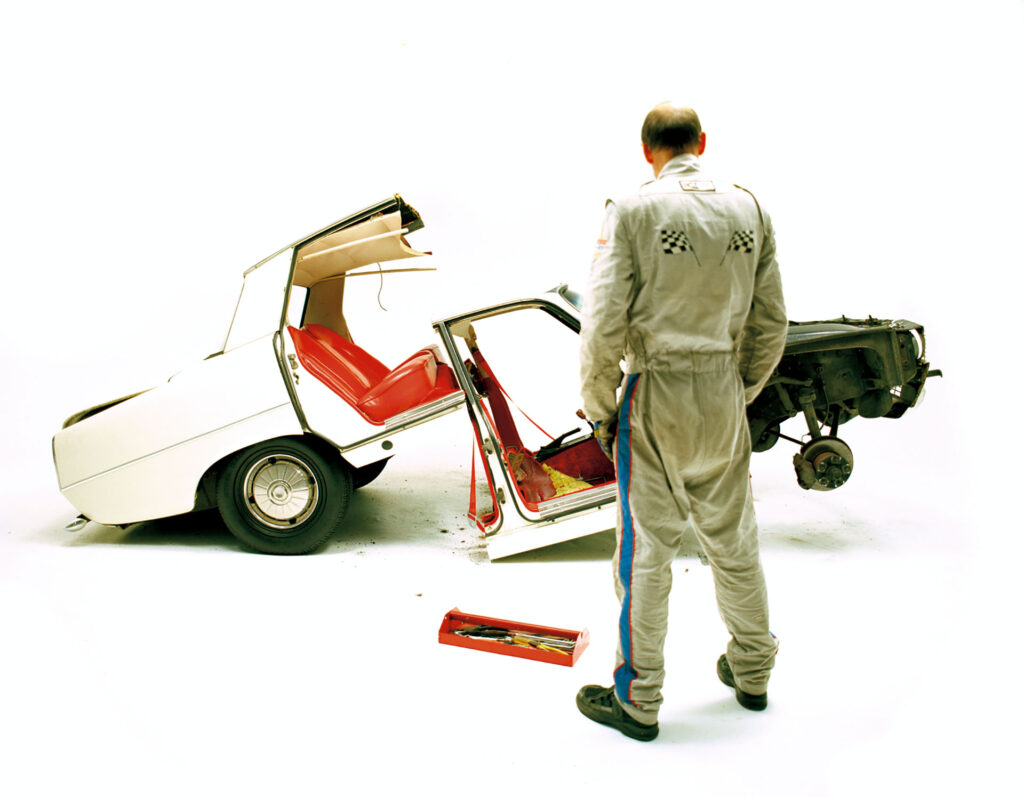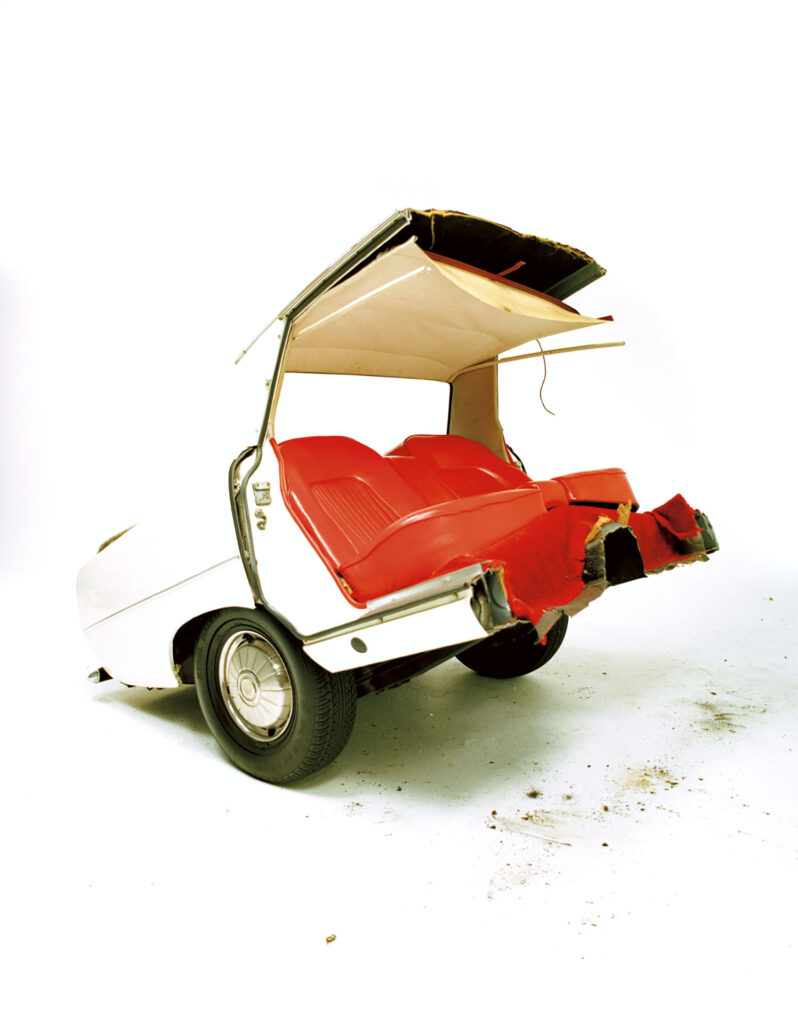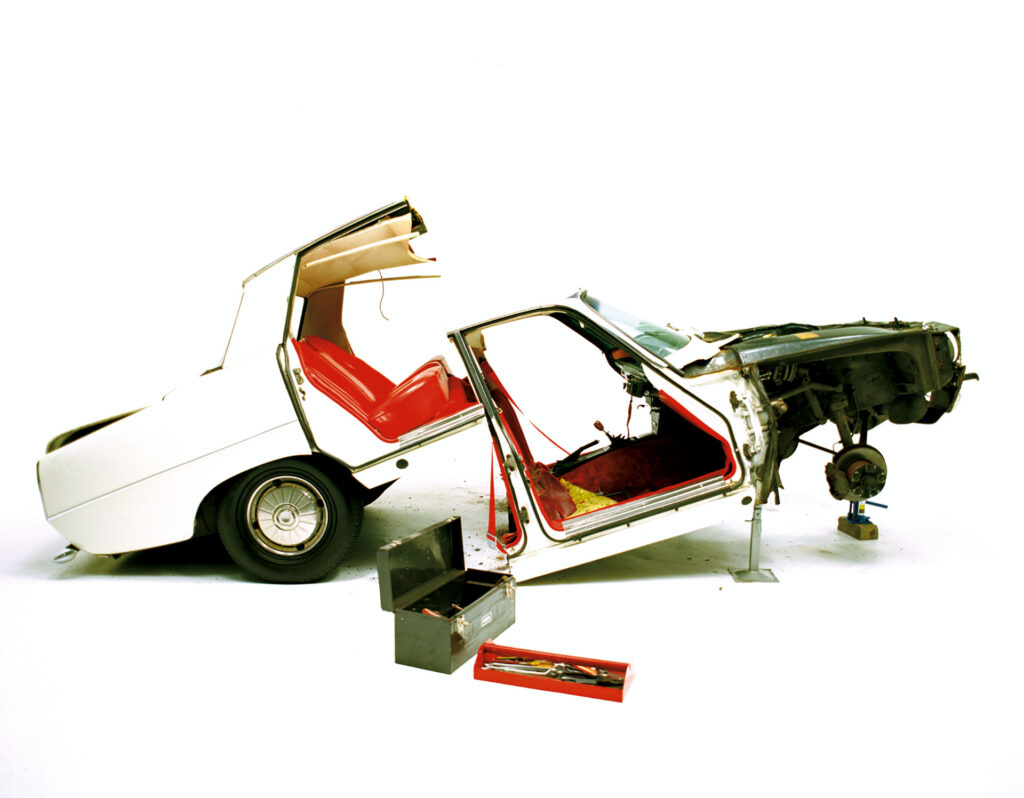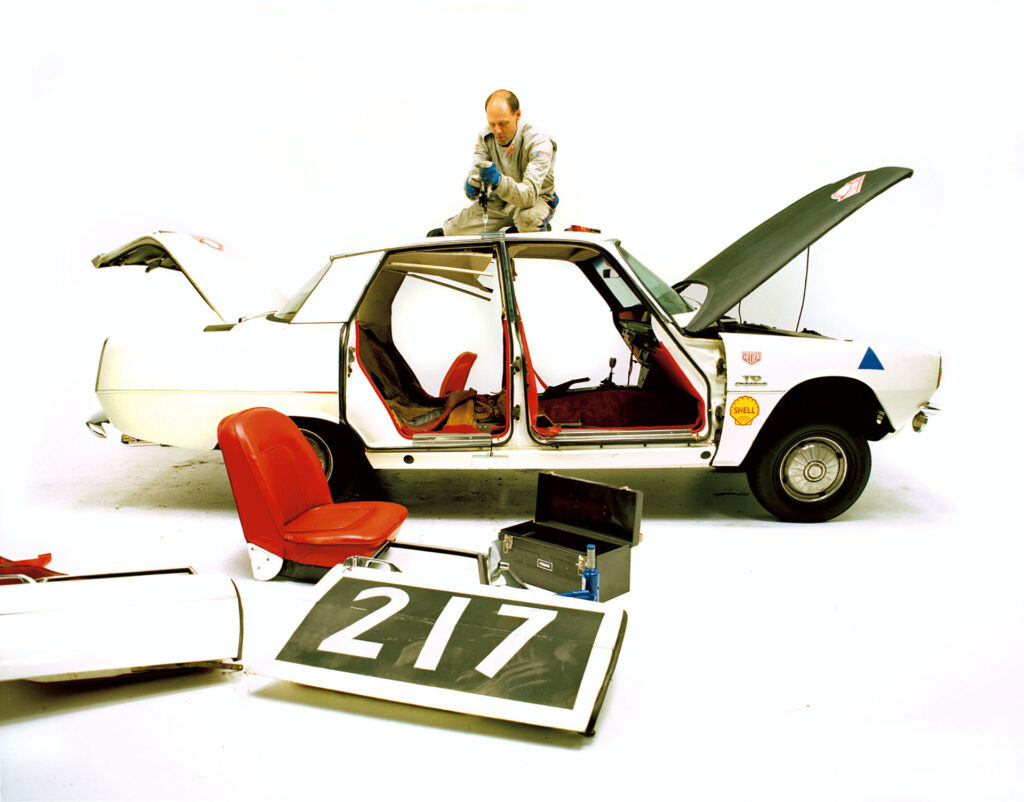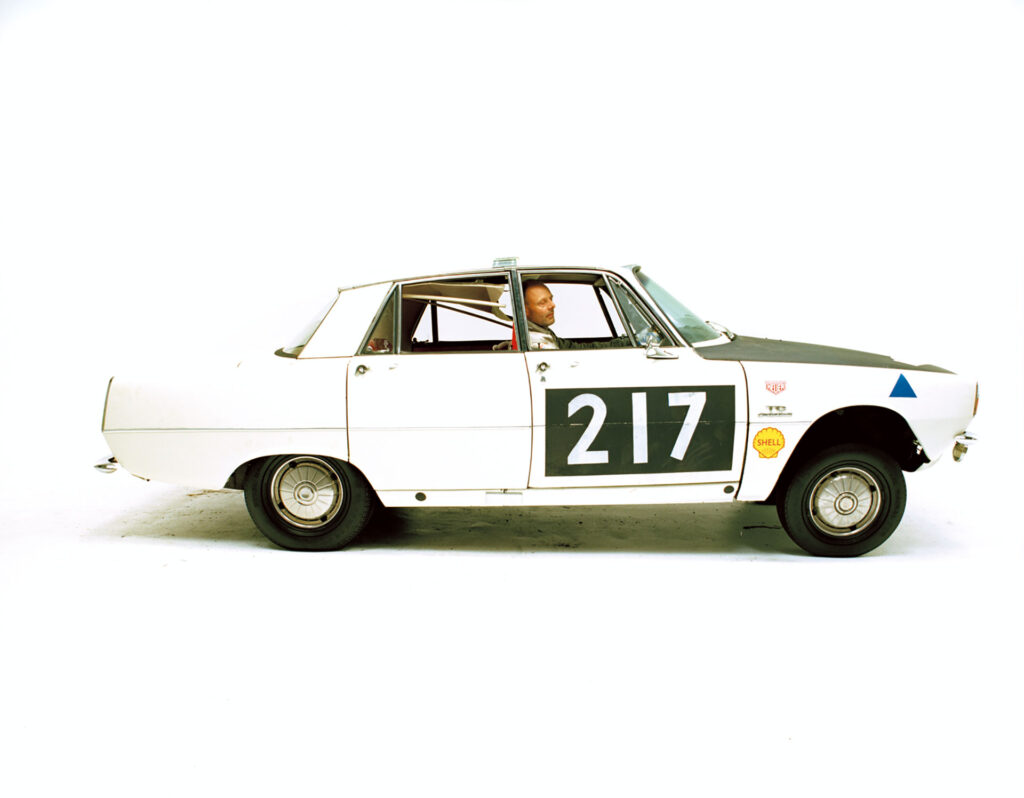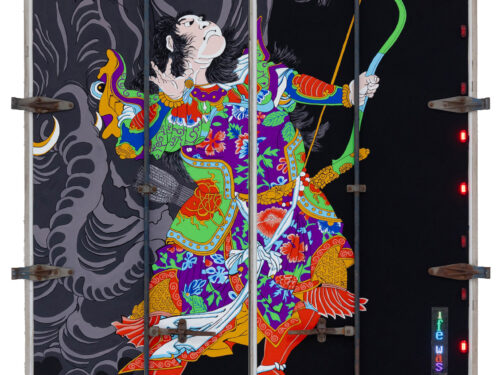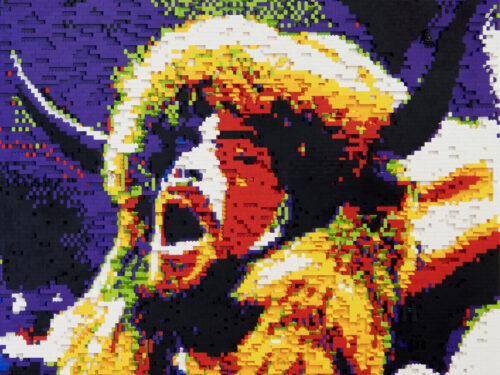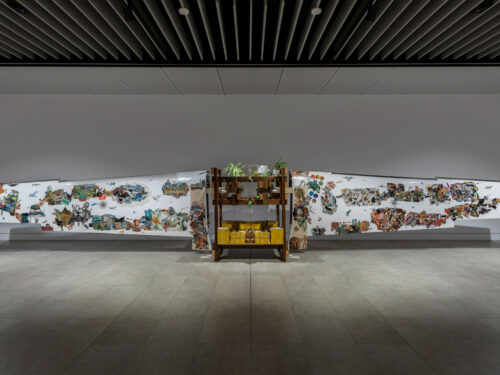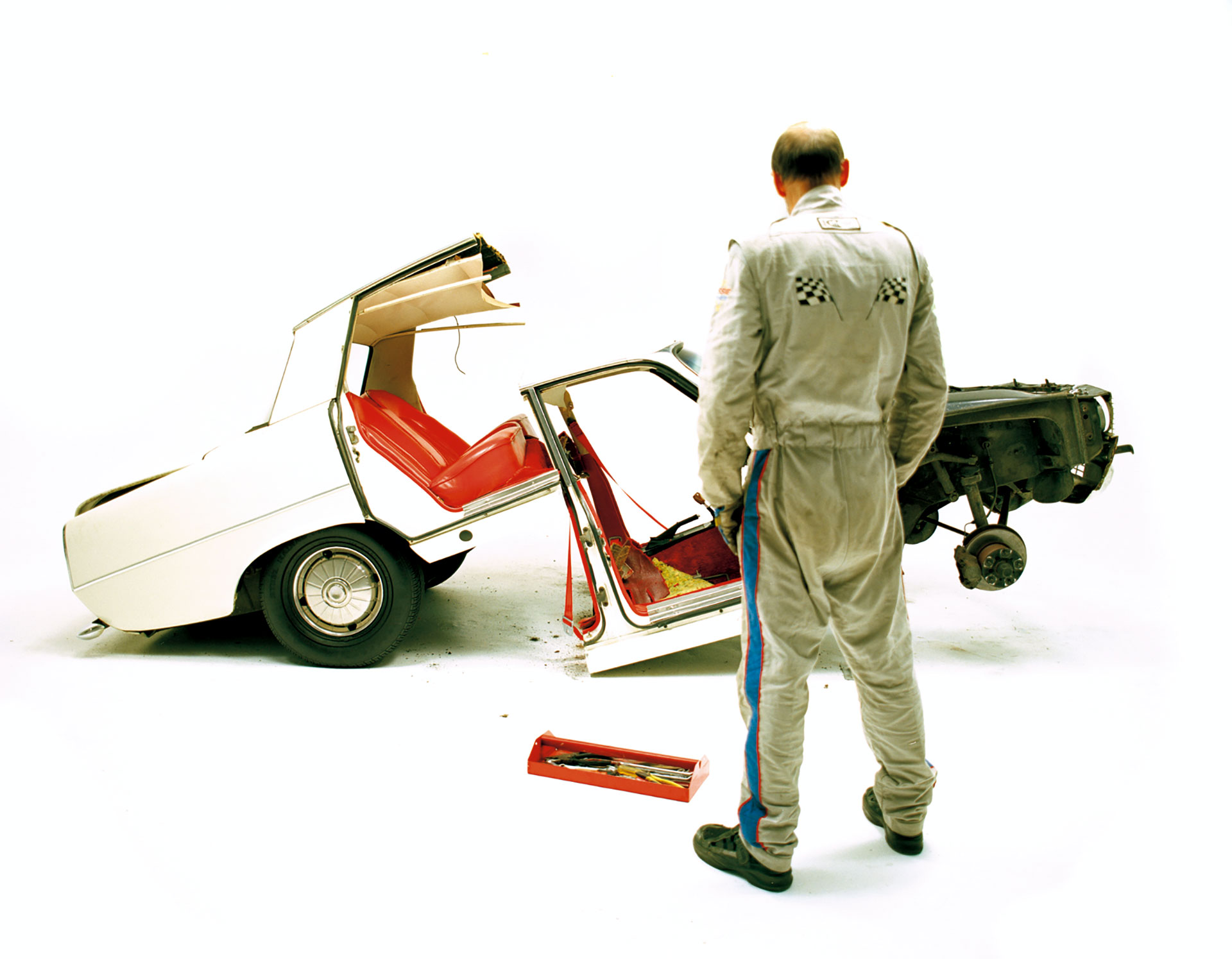
The Drag
Future Drag
Hesse McGraw
There will definitely come a day when all our fossil fuel reserves run out… this artwork is a drag race without gasoline. – Claire Healy and Sean Cordeiro
The end is near, and we expect ecstatic visions. We hope against reason for a terrible beauty. Our pending collapse froths magnetic seduction.
Werner Herzog’s burning wells, Cormac McCarthy’s scorched earth, and Interstellar’s dust storms are pregnant images of human demise, coated with we-deserve-this pathos. These crafted, formal, perhaps iconic images of destruction present the epic flameout of post-20th century reliance on finite resources. The apocalypse is upon us, but it will be stunning high definition.
In the United States, automobiles account for one-fifth of emissions, while globally 15% of manmade carbon dioxide is produced by transportation. Claire Healy and Sean Cordeiro’s work The Drag… (After the peak) (2015) isolates our carbon dreams against their imminent catch. The work elegantly asks ‘what’s the trade-off of our fossil fuel reliance?’ but also ‘what does the end look like?’ Is our vanishing point an incinerated tarmac or ordinary human ingenuity?
Healy and Cordeiro’s dual-screen projection presents a seemingly Sisyphean effort, yet one for which our man is fully equipped. He moves between the screens and is methodical, confident, and silent. A Rover P6 at first sits inert on the left screen, and then he begins his transfixing operation—off come the front wheels, the seats, the steering wheel, he cuts the car in half, jacks up the front end, has a snack, naps on a tire.
In a race against himself, or us, he moves the Rover P6 to the second screen and begins reassembly. Our payoff, as viewers, is in his disciplined and precise action—we are watching an engineering feat, yet, in the end, the car is simply the car, without gas.
Healy and Cordeiro have referred to the automobile as an “embodiment of the individual will” that “denies the collective knowledge and cooperation needed for its existence.” One might read The Drag… as a celebration of human self-sufficiency, but their position is perhaps more fatalist. They ask, “What will happen once the oil runs out? Will the rebel without a cause ride a bicycle instead of a motorcycle?”
We might spin our wheels attempting to reconcile the opposition between human achievement and its global consequence, yet Healy and Cordeiro’s alarm is authentically urgent.
British artist Richard Hamilton’s 1973 Porsche 911S recently went to auction during Bonham’s Festival of Speed Sale. During their promotion of the sale, Bonham’s intoned “For a great artist to see such synergy between fine art and the design of a motor car is a wonderful endorsement of the craftsmanship, style, and design involved in their creation.” It’s a vintage platitude for which it seems Healy and Cordeiro’s work was made.
The work dream ride 5,6,7 (2010) by the New York-based collaborative Ghost of a Dream similarly captures the endless trade-off cycle represented by Healy and Cordeiro. dream ride 5,6,7 is a to-scale Lamborghini Countach fully wallpapered with discarded lottery tickets. A delirious irony of the work’s production is the source of the tickets—Ghost of a Dream were gifted the tickets by the son of a man who had amassed thousands of losing tickets in pursuit of an unfulfilled lake house dream.
The radical pragmatism of The Drag… (After the peak) counters both human striving and apocalyptic fever—only through its loss, might we see the purest forms of human excess defeat themselves.
Hesse McGraw is a curator and writer and is vice president for exhibitions and public programs at San Francisco Art Institute.
